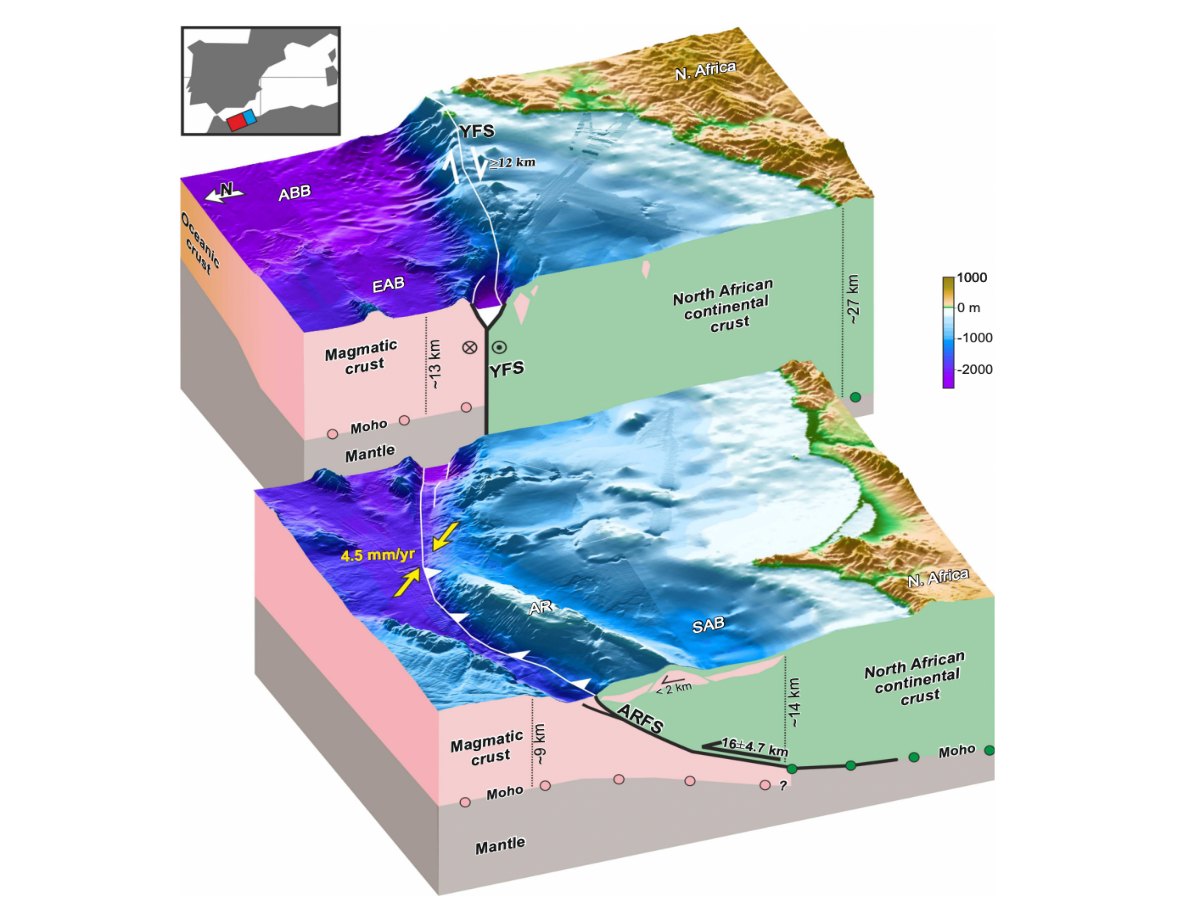Evidence for a developing plate boundary in the western Mediterranean
New geophysical evidence reveals the style of deformation along a plate boundary in the western Mediterranean, as reported in an article published in Nature Communications, to which OGS contributed.
The current diffuse-strain model of the collision between Africa and Eurasia in the western Mediterranean predicts a broad region of deformation and moderate seismicity distributed on numerous faults. However, this model remains largely untested along the Iberian margin, because most of the deformation occurs underwater on poorly characterized faults and with ill-quantified slip.
The international research team analyzed two active offshore fault systems associated with the most prominent seafloor relief in the region. They used newly enhanced seismic imagery to estimate, for the first time, the total Plio-Holocene displacement of the right-lateral Yusuf Ridge and the reverse Alboran Ridge, which are structurally linked together. The new displacement estimates of the team support the development of a well-defined plate boundary fault that accommodates most of the convergence between Africa and Iberia.
Hence the commonly accepted diffuse deformation plate kinematic model appears not to adequately conform to the observed tectonic structures in this sector of the Mediterranean. This study completes our knowledge of the geophysical structures in this area.

